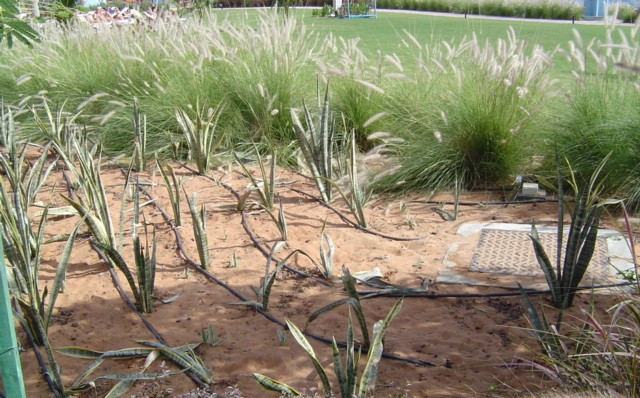Introduction
As an Irrigation Consultant I design irrigation systems all around the world and most of those systems are drip irrigation. I really do love drip irrigation. From the first time I saw it in action around the late 90’s I could really see the benefits of using it, I mean who doesn’t want to save water? Now I am not naive enough to think that just because someone is using drip irrigation that they will automatically be saving water, I have been in the business long enough to know that this is not true. But I do know, from first-hand experience, that if implemented correctly it is possible to save a significant percentage off of your water consumption.
I am always faced with the challenge of reducing water consumption within an irrigation system. Considering how precious a resource water is, it is more important now than ever to be using technology that will maximise this resource. By taking advantage of the benefit that drip irrigation offers, many consumers have reduced their water use without compromising on the quality of the landscape as well as saving on maintenance costs.
Drip irrigation
Drip irrigation as a concept has been around for thousands of years, starting out as unglazed clay pots buried in the field. Modern drip irrigation technology as we know it really began to move forward from the early 1960’s. Over the last 20 years the demand for drip irrigation has grown as more and more people become aware of the benefits and is used extensively in agriculture, nurseries, green houses, landscapes and sports fields. Whether your motivation to use drip irrigation is to improve profitability, improve yield or to utilise the water you have responsibly the key is ensuring you have the right product to fit your requirements and a design completed by an irrigation consultant. Drip irrigation comes in basically two categories; surface irrigation and sub-surface irrigation. Subsurface comprises of drip tube with either a built in emitter or a manually inserted emitter. The emission devices in surface drip irrigation can be categorised as drip tape, drip emitter, jet or micro sprinkler and are selected according to what is best suited to the plant requirements.
Types of drip irrigation
Drip emission devices have been designed to deliver the same amount of water from each outlet across the whole system. This ensures a high uniformity and even distribution of water throughout the site. Drip application rates can be tailored specifically to meet the plant and soil type and should be designed to do just that. Drip irrigation allows for a flexible approach to watering regardless of if it is on surface or subsurface. One of the benefits of drip irrigation is that there is also a reduction in the leaching of nutrients from the soil due to excessive irrigation, this results in having to apply less fertilisers and other chemicals and therefore can result in savings.
Irrigation consultant
When deciding on which materials to use for your irrigation system, it is essential that you work with an independent irrigation consultant who has no product ties and who will give you an unbiased opinion based on years of experience and know how. The selected materials should be durable and robust, able to withstand out door conditions for several seasons (up to 10 years depending on the application). The emission devices should be resistant to clogging, should be pressure compensating, precise in the application rate of water and should also be economically affordable. The key to having a system that will perform efficiently is to ensure the products used are suitable and the system is designed well.
Conclusion
In summary, drip irrigation might not be the method that meets all requirements but as a system it will meet at least 90% of the market need. With benefits like reduced water application, superior uniformity, reduced evaporation and a decrease in disease, it is evident that drip irrigation excels above other methods. When contemplating on what system will best meet your irrigation requirements, how can you not consider it first when comparing to other irrigation methods?













